33 F. high on Monday in St. Cloud.29 F. average high on February 22.-2 F. high on February 22, 2015, after waking up to -14 F.
February 23, 1981: Warmth returns to Minnesota with a high of 55 at Pipestone and a high of 52 at Luverne.
Why We Call It Winter. Light Mix Today"No
winter lasts forever; no spring skips its turn" wrote Hal Borland.
According to the UK Met Office the word winters comes from the Germanic
"wintar", which in turn is derived from the root wed, meaning 'wet' or
water', signifying a wet season. Anglo Saxon ancestors measured the
passage of time not in years, but winters.
As in "How many winters have you survived?"
Every
winter is slightly different; the patterns are never identical. This
randomness: interaction between land, air, water and the
cryosphere/arctic makes it challenging to predict the state of the
atmosphere at any point in the future. That's why the 7-Day is often a
bust, in spite of supercomputers, satellites and bright, shiny Dopplers.
Our
models can't account for all the variables in play,some we're not even
aware of. It's a little like trying to predict a presidential election 9
months in advance.
A slushy coating is possible today; maybe a couple inches
Sunday, as a numbing shot of air brushes the state. Highs may hold in the teens next
Monday, but as a rule daytime highs top freezing into early March.
It's a slow-motion winter fizzle.
* Photo credit above:
Bryan Hansel Photography.
 8 Interesting Facts About Winter.
8 Interesting Facts About Winter. The information in today's column about the origin of "winter" came from a story at the
UK Met Office, which adds: "...
You
might surprised to know that in the northern hemisphere the earth is
closest to the sun during winter. On January 2 2016 the Earth will reach
perihelion (peri meaning 'near' and helion meaning 'sun') and the earth
is 3.1 million miles closer to the sun than at aphelion (around July 5
when the earth is furthest from the sun). Earth's distance from the sun
is not what causes the seasons (it is the tilt of the earth's axis)
but it does affect the length of them. Around perihelion the earth is
moving around 1 kilometre per second faster than at aphelion which
results in winter being 5 days shorter than summer..."
Big Temperature Gyrations.
A mild signal continues - but Sunday and Monday will be poignant
reminders that it's still winter, at least in theory. European guidance
hints at 40s Saturday; maybe an inch or two of snow Sundayas
temperatures drop off and northwest winds increase. Highs may hold in
the teens Monday before a quick rebound next week. Source: WeatherSpark.
Tornado Potential.
El Nino has energized the southerly branch of the jet stream; powerful
winds veering with altitude may create enough shear for rotating
supercell thunderstorms by afternoon - a few may produce large, violent,
long-track tornadoes, especially New Orleans to Mobile and southern
Alabama.
Not a Typo.
As of early this morning surface temperatures average over the arctic
are running about 14F warmer than average. And no, this isn't merely a
reflection of El Nino. This is evidence of a much broader warming trend:
atmosphere and oceans, including the Arctic Ocean. I've never seen an
anomaly quite this.
Map credit:
Climate Reanalyzer.
Uncharted Waters.
I use the word "waters" quite literally, because at the rate we're
going 2016 may see unprecedented open water where there used to be ice,
at the polar ice cap. With historic warmth over the arctic the prospect
for melting than we saw during the previous record, 2012, is very real.
The arctic is melting faster than climate models predicted; an
inconvenient reality. Graphic:
National Snow and Ice Data Center.
Experts Look at Buildings, Codes After Texas Tornadoes.
Although a totally tornado-proof home is probably cost-prohibitive,
making homes more tornado (and hail) resilient will be a booming market
in the years to come; here's an excerpt from
The Washington Times: "...
Tornadoes
don’t destroy homes instantly. Instead, they find weak points and
progressively tear homes apart from there, says Chris Ramseyer, an
engineering professor at the University of Oklahoma who specializes in
structural design. “It finds the corner that’s weak, pulls it apart, and
then it works on what’s left,” he said. Reinforcing that one weak
corner, often the home’s garage, can save the entire structure. “The
costs that you’re looking at are generally less than the cost of the
granite countertop that the homeowner wants in the kitchen,” Ramseyer
said..." (File photo: EPA).
Winter Records To Date.
According to Climate Central the Lower 48 States have experienced
15,665 record highs vs. 10,177 record lows so far this winter. That
doesn't prove anything, other than an extra-strong El Nino signal. But
the Northern Hemisphere is consistently experiencing more record heat
than cold, even during La Nina years, by a margin of 2 to 1.
Tropical Cyclone Winston Makes Category 5 Landfall; Strongest on Record in Fiji. Here's a link to a terrific explainer and story update at
The Weather Channel: "...
Tropical Cyclone Winston raked across Fiji Saturday with Category 5 winds,
the strongest landfalling tropical cyclone on record in the South
Pacific archipelago. Winston is now located west of Fiji and is forecast
to curl southward away from land while weakening the next few days.
According to the U.S. Joint Typhoon Warning Center (JTWC), Winston made
landfall along the north coast of Fiji's largest, most populous island,
Viti Levu, Saturday evening, local time (Fiji is 17 hours ahead of U.S.
Eastern standard time), packing estimated maximum sustained winds of 180
mph..."
Weather Wise: How Are Tornadoes Identified?
New dual-polarization Doppler is so sensitive it can track tornado
debris lofted into the air, helping to confirm that a tornado is, in
fact, on the ground. Here's an excerpt from
Florida Today: "...
But
how do meteorologists know if a tornado has touched down or not?
Obviously, eyewitness accounts or footage could help confirm things, but
given that it was dark and the rotation was seen initially in an area
without much, if any population, that wasn’t to be. Instead, during an
event, forecasters look for a tornadic debris signature on radar. “If
there is a tornadic debris sign on radar, that will give us
confirmation,” Kelly said. “At that point, we would update the warning
probably to OK, we have more confidence now that there is a tornado on
the ground.” Kelly adds that the strength makes the debris signatures
“more pronounced.” Essentially, the higher that the debris field is, the
stronger the tornado is..."
Latest Moose Count Provides Little Good News. Here's an excerpt from
The Star Tribune: "
Minnesota’s
moose continued their long decline in 2015. The state’s annual aerial
survey, taken in January, estimated the state’s moose population at
4,020, up slightly from the previous year. But the change was not
significant enough to signal a shift in the long downward trend, the
Minnesota Department of Natural Resources (DNR) said Tuesday. The
population has dropped by more than half since 2006. Offering a glimmer
of hope, moose numbers have stabilized somewhat in recent years, and the
number of calves that survived their first year doubled compared to an
earlier count..."
Photo credit above: BRIAN PETERSON. "
This bull moose, sprouting new antler growth on its head, grazed in a swamp off the Gunflint Trail in northeastern Minnesota."
 Peak Oil Returns: Why Demand Will Likely Peak by 2030
Peak Oil Returns: Why Demand Will Likely Peak by 2030. Here's a clip from an analysis at
ThinkProgress: "...
If
China gets moving on electric cars then that would automatically lower
prices and have a favorable ripple effect across the whole world,” as
Ernst and Young auto expert Jean-Francois Belorgey has said.
That is precisely what happened in the solar photovoltaics industry,
which led to the exponential explosion in solar power worldwide this
decade. We appear near the same kind of inflection point in batteries
and electric cars that we were in PV. Yes, oil prices are low, but even
at these prices, EVs still have a much lower per-mile fueling cost than
gasoline cars..."
How Clean Energy Became a Code Word in Washington.
Energy independence applies to sources beyond dirty fossil fuels. At
some point the GOP will acknowledge the obvious. Here's a clip at
ThinkProgress: "...
But at some point, something has got to give. ClearPath’s polling shows what lots of other polls show: Americans want clean energy. Even more strikingly, 70 percent of Americans accept that climate change is real and caused by humans. A correlating seven out of 10
want their state to comply with the Clean Power Plan. And this reality
in voting districts is having an effect on the ground. Last fall, facing
a tight re-election race against the Democratic governor, New
Hampshire’s Kelly Ayotte became the first Republican senator to support the Clean Power Plan..."
How America Is Putting Itself Back Together.
Is America as big a basket base as some presidential candidates would
like us to believe? The jury is out, but James Fallows renewed my
abiding faith in the USA in his essay at
The Atlantic; here's an excerpt: "...
As
a whole, the country may seem to be going to hell. That jeremiad view
is a great constant through American history. The sentiment is
predictably and particularly strong in a presidential-election year like
this one, when the “out” party always has a reason to argue that things
are bad and getting worse. And plenty of objective indicators of
trouble, from stagnant median wages to drug epidemics in rural America
to gun deaths inflicted by law-enforcement officers and civilians,
support the dystopian case. But here is what I now know about America
that I didn’t know when we started these travels, and that I think
almost no one would infer from the normal diet of news coverage and
political discourse..."

What's Next in Computing? Medium
has a long and interesting article about AI, drones, virtual reality,
mobile intelligence and IoT; a worthy read. Here's an excerpt: "...
I
tend to think we are on the cusp of not one but multiple new eras. The
“peace dividend of the smartphone war” created a Cambrian explosion of
new devices, and developments in software, especially AI, will make
those devices smart and useful. Many of the futuristic technologies
discussed above exist today, and will be broadly accessible in the near
future. Observers have noted that many of these new devices are in their
“awkward adolescence.”
That is because they are in their gestation phase. Like PCs in the 70s,
the internet in the 80s, and smartphones in the early 2000s, we are
seeing pieces of a future that isn’t quite here. But
the future is coming: markets go up and down, and excitement ebbs and
flows, but computing technology marches steadily forward."
The Promise Rio Couldn't Keep. ESPN
reports on the health risks to athletes and fans in the 2016 Summer
Olympics in Rio de Janeiro, Brazil. Between Zika Virus and filthy water
the challenges are significant; here's an excerpt: "...Profound
and intractable as the city's sanitation problems are, the precise
risks to Olympic athletes competing on any given day this summer are
hard to calculate. Some got sick at sporting test events last year, but
none of these cases has been publicly, definitively connected to the
water, as opposed to food or another source. "Epidemiology is a science
of population health, not individual health," says Joseph Eisenberg, a
University of Michigan professor of epidemiology who studies waterborne
disease pathways. "It's statistical association, not deterministic." In
the event of a large-scale outbreak, suspect environments would be
tested, he says. But no team of scientists in hazmat suits rushed to the
scene to investigate the microbes that caused stomach bugs in a
smattering of athletes..."
"Sorrisniva Igloo Hotel: The World's Northernmost Ice Hotel. If you're looking for something really off the beaten path check out the story at
Atlas Obscura: "
Perched
at the top of the world amidst snow and darkness, the Igloo Hotel
inverts a conventional dread of winter in favor of harnessing the
season's best elements for the enjoyment of its visitors. Situated 20
kilometers outside the nearest town of Alta, alongside a river of the
same name, the Igloo Hotel at Sorrisniva holds the title of “world’s
northernmost ice hotel.” Constructed in a t-shape, the hotel consists of
30 rooms, a restaurant, and an ice bar. Everything about the place,
from its walls to the interior — even down to its bed frames and the
glasses in its bar — are constructed from pure, frozen Scandinavian
water..."
Photo credit above: "
Pelts and roses at the Igloo Hotel." Photo by arcticroute.com on Flickr | Copyright: Creative Commons.
Sizzle For a Cause.
If you want to sample some terrific food and support a very good cause
come out to Cast & Cru Thursday evening - we always have an amazing
time together! Details on the event here.
Creepy or Collectible? Why People Spend Thousands of Dollars to Collect Celebrities' Hair. There, I'm feeling normal again, after reading an article at The Washington Post; here's a clipping (sorry): "...The
pursuit of famous hairs combines two great pastimes of the human
psyche: collection and celebrity obsession. Most people have felt the
rush of collecting something, be it stamps and baseball cards, or
something much weirder like belly button fluff or traffic cones. The thrill
of the hunt and the satisfaction that comes when you find something
you’ve been looking for is understandably addicting. Collections and
celebrity love mix easily. Fans collect autographs, film and
TV memorabilia, magazines, et cetera. The longer-lasting the subject’s
fame, the more valuable the object..."
Photo credit above: "
A U.S. auction house sold this clipping of John Lennon’s hair for $35,000." (Reuters/Heritage Auctions).
TODAY: Light mix, wet roads. Winds: SW 8-13. High: 38
TUESDAY NIGHT: Sprinkles and flurries taper. Low: 25
WEDNESDAY: Partly sunny, seasonably cool for late February. Winds: N 8-13. High: 36
THURSDAY: Mix of clouds and sun, a dry sky. Winds: NW 10-20. Wake-up: 22. High: 33
FRIDAY: Some sun, turning milder. Winds: SW 10-15. Wake-up: 24. High: 38
SATURDAY: Thaw continues, better travel day. Winds: NW 8-13. Wake-up: 33. High: 44
SUNDAY: Couple inches of snow? Colder wind. Winds: NW 15-25. Wake-up: 27. High: 29 (falling rapidly)
MONDAY: So this is what winter feels like! Bright sunshine. Wake-up: 4. High: 17
Climate Stories....
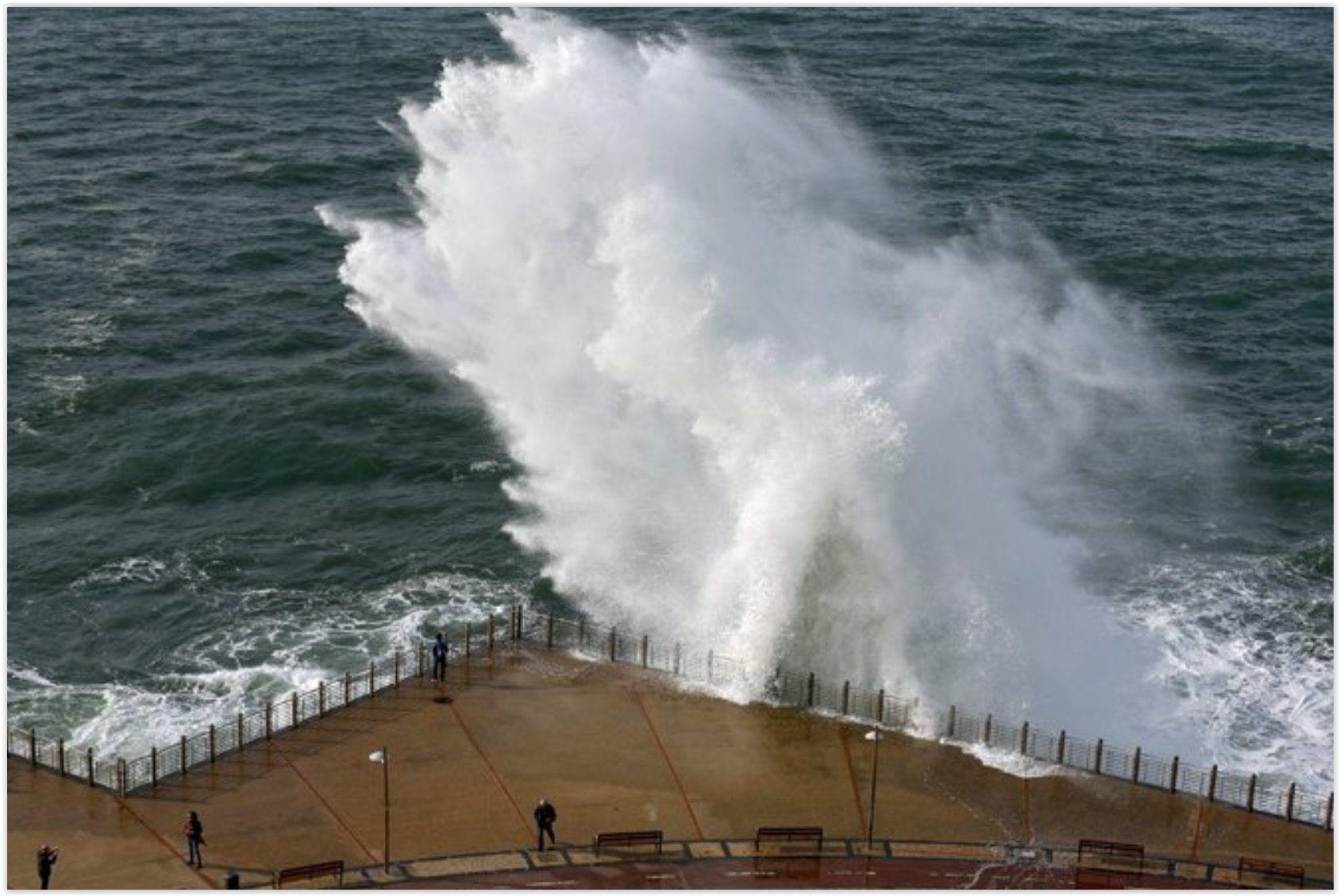
Seas Are Rising at the Fastest Rate in the Last 28 Centuries. Climate
change will more than a minor inconvenience for residents of Miami
Beach, Norfolk or coastal Louisiana. It already is. Here's the intro to a
story from Justin Gillis at
The New York Times: "
The
oceans are rising faster than at any point in the last 28 centuries,
and human emissions of greenhouse gases are primarily responsible,
scientists reported Monday. They added that the flooding that is
starting to make life miserable in many coastal towns — like Miami
Beach; Norfolk, Va.; and Charleston, S.C. — was largely a consequence of
those emissions, and that it is likely to grow worse in coming years.
The scientists confirmed previous estimates, but with a larger data set,
that if global emissions continue at a high rate over the next few
decades, the ocean could rise as much as three or four feet by 2100, as
ocean water expands and the great ice sheets in Greenland and Antarctica
begin to collapse..."
Photo credit above: "Waves
striking the promenade in San Sebastián, Spain, earlier this month.
Scientists warned on Monday that flooding driven by climate change is
likely to worsen in coming years." Credit Juan Herrero/European Pressphoto Agency
Kasich Talks of Climate Change at VT Event. Three
cheers to a Republican presidential candidate brave enough to
acknowledge the science, evidence and facts and not resort to
ideology-driven cop-outs or fossil-fueled fairy tales. Here's an excerpt
from
Burlington Free Press: "...
Given
that I’m a scientist, I believe in science, what do you think about the
science of climate change?” Rovner asked. “I know that human beings
affect the climate,” Kasich said. "I know it’s an apostasy in the
Republican Party to say that. I guess that’s what I’ve always been —
being able to challenge some of the status quo.” Kasich went on to say
that “we need to develop all of the renewables,” including battery
technology to store solar power..."
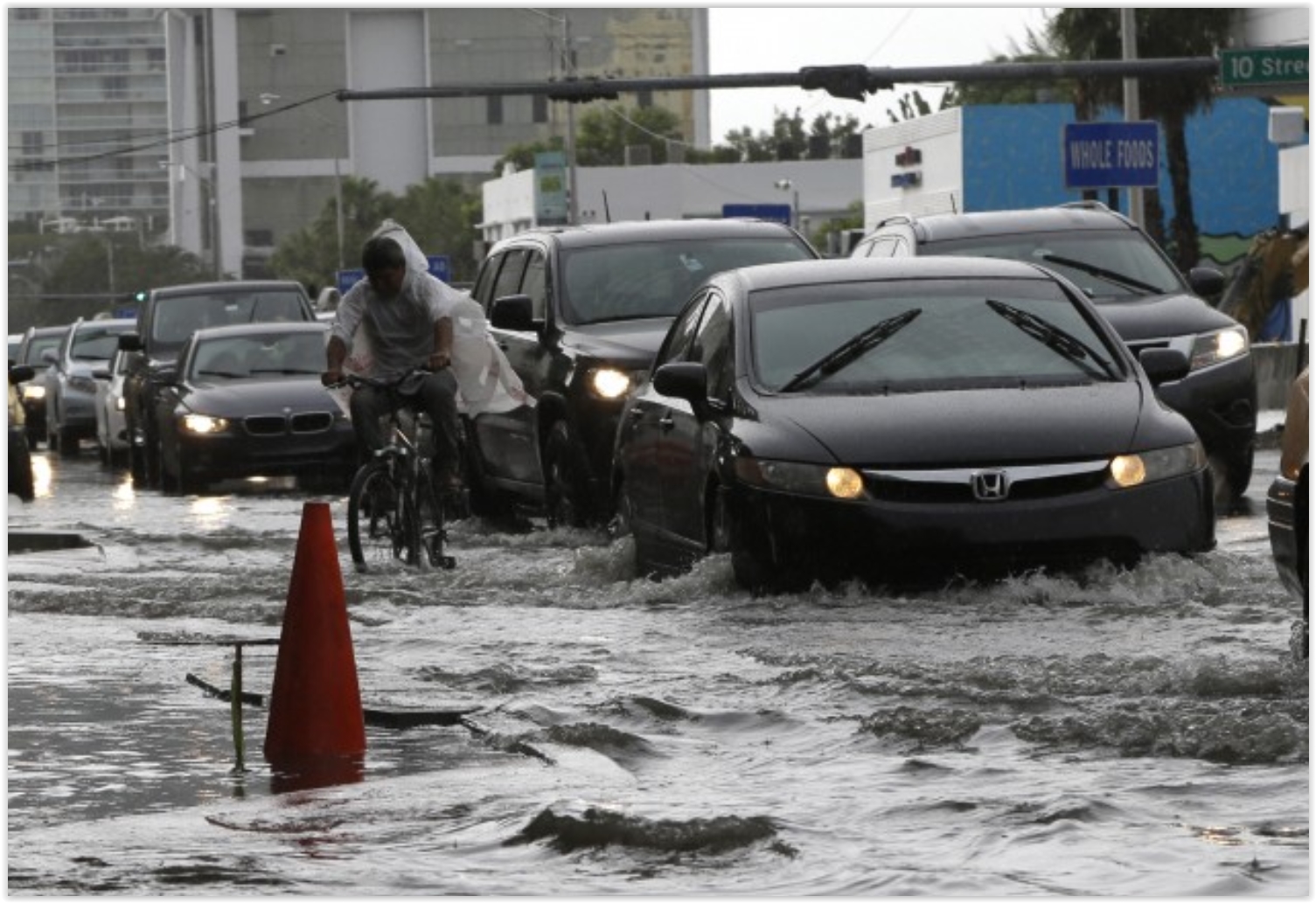 That Sinking Feeling
That Sinking Feeling.
Keep an eye on South Florida in the coming years - and think twice
before purchasing beachfront property. Here's an excerpt from
American Prospect: "...
In
Southeast Florida, the sea could rise three feet by 2060, and that
doesn’t count temporary storm surges from increasingly intense
hurricanes. Seventy-five percent of Florida’s population lives in
coastal counties that generate 79 percent of the state’s total annual
economy. The infrastructure in these coastal counties had a replacement
value of $2 trillion in 2010 and is estimated to increase to $3 trillion
by 2030. Of the 2.6 million people who live in Miami-Dade County,
nearly 129,000 of them are living less than three feet above sea level.
The county alone has more people living less than four feet above sea
level than in any other state except Louisiana. The county’s estimated
beachfront property value is more than $14.7 billion—not including
infrastructure..."
Photo credit above: AP Photo/Lynne Sladky. "
A
cyclist and vehicles negotiate heavily flooded streets as rain falls,
Tuesday, September 23, 2014, in Miami Beach, Fla. Certain neighborhoods
regularly experience flooding during heavy rains and extreme high tides.
New storm water pumps are currently being installed along the bay front
in Miami Beach."
For Russian Farmers, Climate Change is Nyet So Great.
NPR takes a look at the reaction to a rapidly-warming Siberia; here's an excerpt: "...
But that's not how it appears to the popular imagination, says George Safonov, who heads the Center for Environmental and Natural Resource Economics at the Higher School of Economics
in Moscow. He says there's a big temptation in northern countries to
believe that warmer weather can bring economic opportunities, such as
improving conditions for farming. "Before 2010, we had a rising harvest
rate for crops, and that was explained as a very positive impact of
climate change," he says. "It was not easy to convince people that this
is not correct." The problem, Safonov says, is that while warmer weather
might open up more land in cold regions such as Siberia, it's already
causing havoc on existing farmland in the south..."
Temperature anomaly map valid 12z this morning courtesy of
Climate Reanalyzer.
Short-Term Climate Sensitivity on Vegetation Productivity. Certain ecosystems appear to be more vulnerable than others, according to research highlighted at
MicroCap Magazine: "...
Seddon,
adds, “We have found ecologically sensitive regions with amplified
responses to climate variability in the Arctic tundra, parts of the
boreal forest belt, the tropical rainforest, alpine regions worldwide,
steppe and prairie regions of central Asia and North and South America,
forests in South America, and eastern areas of Australia.” The
researchers say they have developed a quantifiable response measurement,
called the Vegetation Sensitivity Index (VSI), that can show how
ecosystems are challenged by short-term climate anomalies, such as a
warmer June than the average, a colder December, or even a cloudy
September. The team says the index can supplement other methods of
monitoring and evaluating the health of ecosystems across the globe..." (Map credit: Verisk Maplecroft 2014).
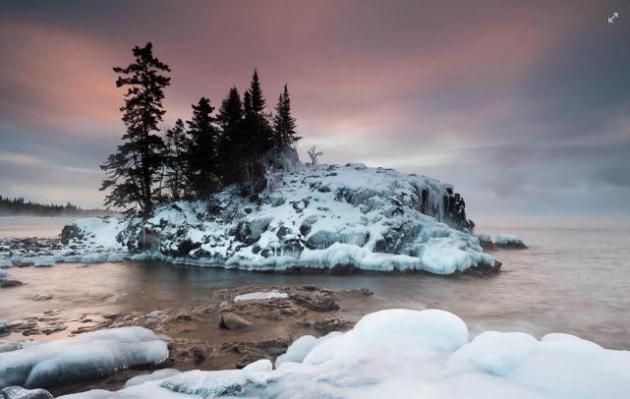
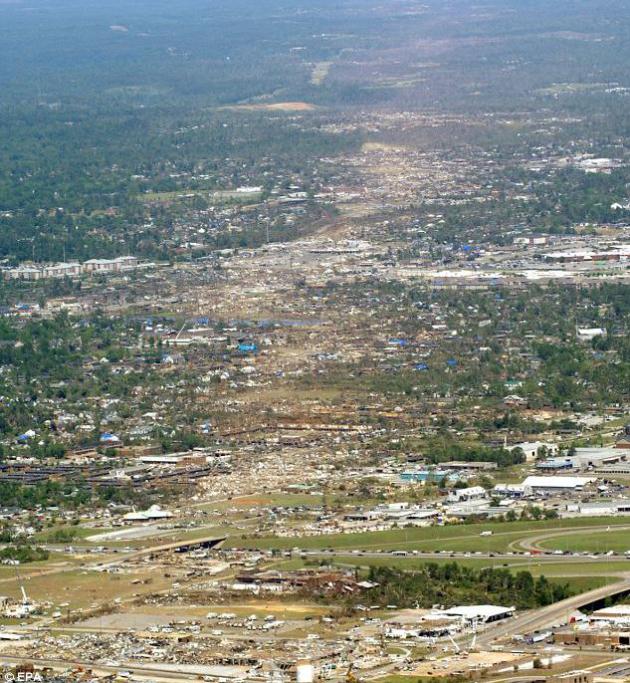
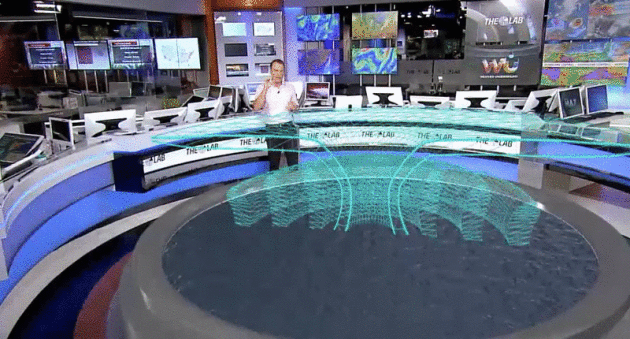




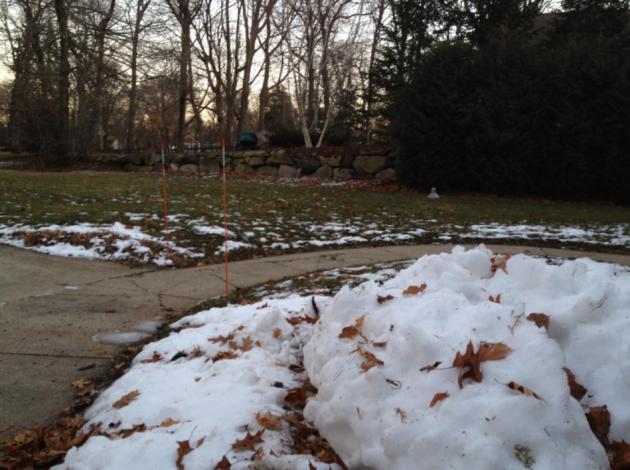
No comments:
Post a Comment